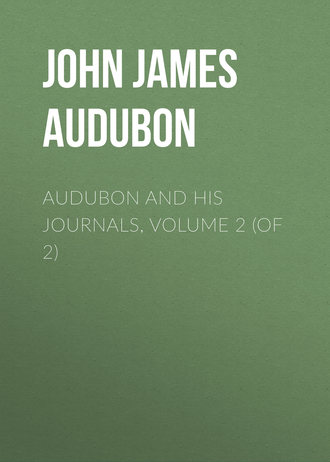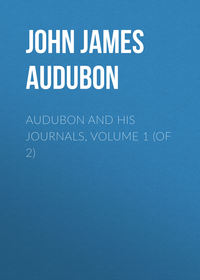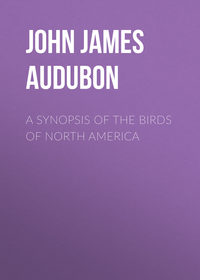 полная версия
полная версияAudubon and his Journals, Volume 2 (of 2)
50
This was on the journey made by Audubon and his partner, Ferdinand Rozier, from Louisville to St. Genevieve, then in Upper Louisiana. They left Louisville in the autumn of 1810, and Audubon returned in the spring of 1811.
51
This incident occurred during Audubon's return trip to St. Geneviève in the early spring of 1812.
52
Sylvia parus, Hemlock Warbler; Ornith. Biog. vol. ii. page 205.
53
Audubon and Mr. Irish met many times afterwards, the last being, I believe, in Philadelphia, on the eve of Audubon's departure for his Missouri River trip.
54
Then Philadelphia.
55
The name given by the wreckers and smugglers to the "Marion."
56
Plate cclxxxi., ed. 1827-1839; plate ccclxviii., ed. 1843.
57
The "Moose Hunt" was communicated to me by my young friend, Thomas Lincoln, of Dennysville in Maine.
58
The last Episode in vol. ii. of the "Ornithological Biographies."
59
"On the 16th [June, 1778], before sunrise, I departed in the most secret manner, and arrived at Boonesborough on the 20th, after a journey of 160 miles, during which I had but one meal." (Letter of Daniel Boone, who was then forty-three.)
60
This bird [the White Ibis], to procure the Cray-fish, walks with remarkable care to the mounds of mud which the latter throws up while forming its hole, and breaks up the upper part of the fabric, dropping the fragments into the deep cavity that has been made by the animal. Then the Ibis retires a single step, and patiently waits the result. The Cray-fish, incommoded by the load of earth, instantly sets to work anew, and at last reaches the entrance of its burrow; but the moment it comes in sight the Ibis seizes it with his bill. (The White Ibis, Ibis Alba, Plate CCXXII., Ornith. Biog., vol. iii., p. 176).
61
Audubon's drawings have been criticised for their flatness. Of this, Cuvier says: "It is difficult to give a true picture of a bird with the same effect of perspective as a landscape, and the lack of this is no defect in a work on Natural History. Naturalists prefer the real color of objects to those accidental tints which are the result of the varied reflections of light necessary to complete picturesque representations, but foreign and even injurious to scientific truth."
62
This was in 1838; they have since been destroyed by fire, or, at least, the greater number.





